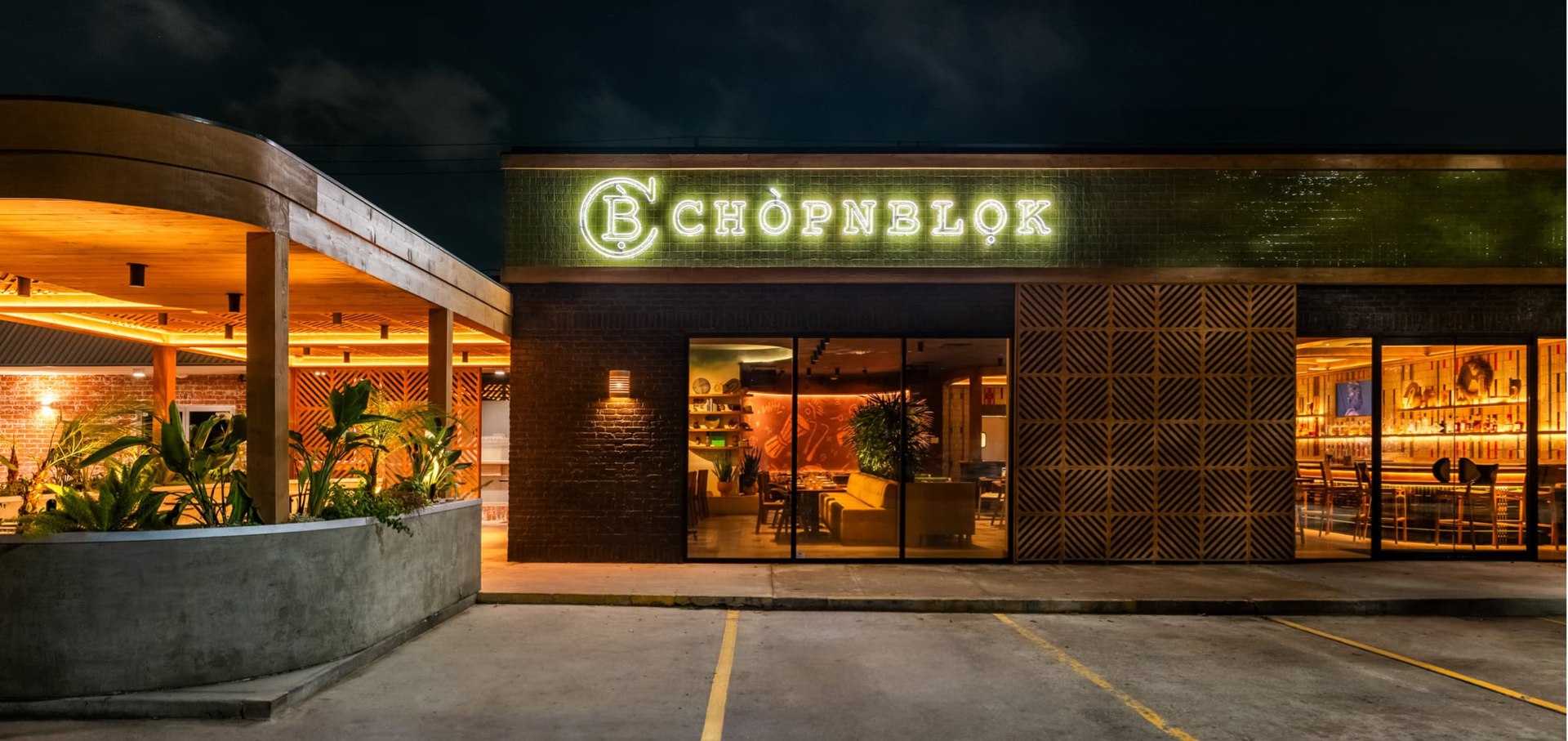Craft, Cuisine, and Culture Unite at Houston’s ChòpnBlọk
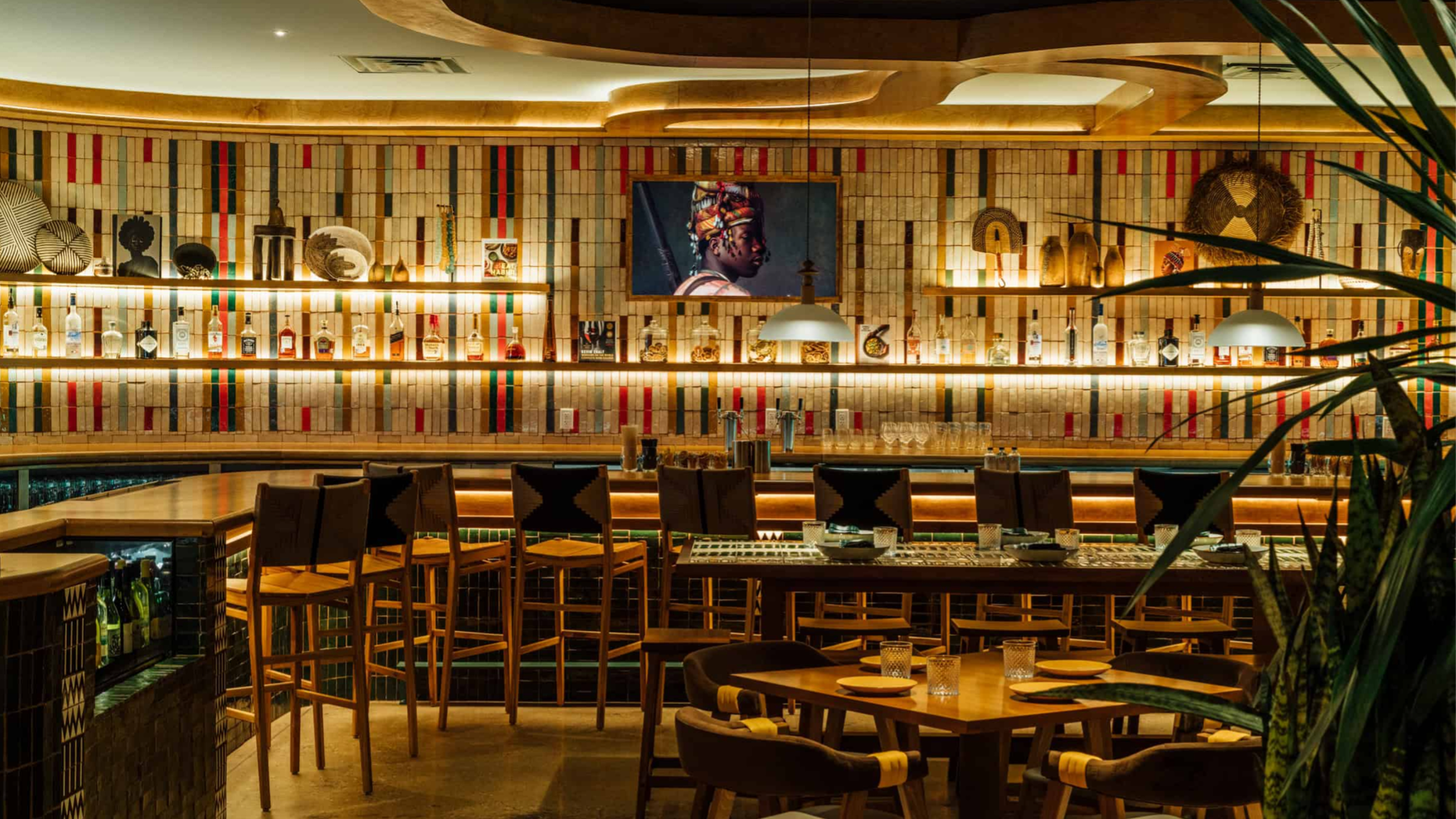
All photography by Arturo Olmos
What started as a pop-up for Chef Ope Amosu in 2018 is now a star in the Houston dining scene. ChòpnBlọk, Amosu's fast-casual spin on West African cuisine, now has a brick-and-mortar location in the neighborhood of Montrose, an area known for its quirky charm and eclectic spirit. When it came to designing the restaurant, he turned to Gin Design Group to capture his vision for the space.
"I admire the work that the Gin Design Group does, their eye for design, and the amount of intentionality they put toward understanding the cultural embodiment of our space, as well as their willingness to collaborate with other cultural experts and designers," says Amosu, who has received two James Beard Award nominations.
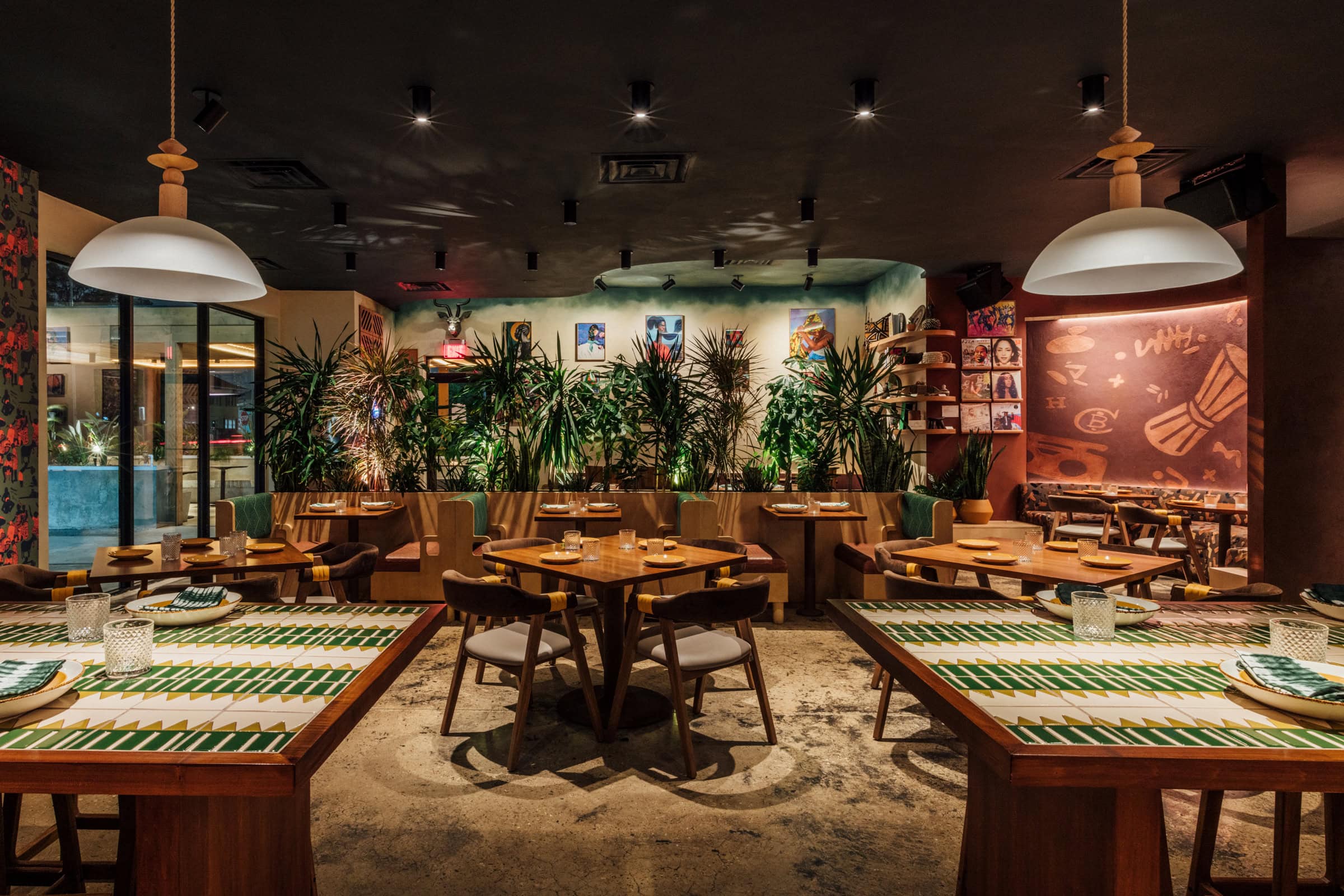
Just as the ChòpnBlọk menu is inspired by the African diaspora, so is the design. Gin Braverman, creative director of the Gin Design Group, explains how she worked with Amosu and Zainob Amao, ChòpnBlọk’s creative director, to achieve a cultural narrative through design. "We collaboratively brought the culture to life through the textures, finishes, art, and even furniture," she says.
This interpretation took the form of stenciled mud walls and limewash walls by Republic Finishes, custom wallpaper by Nigerian artist Uzo Njoku, and tabletops with tile patterns created by Nigerian American textile designer Shade Akanbi for Clay Imports.
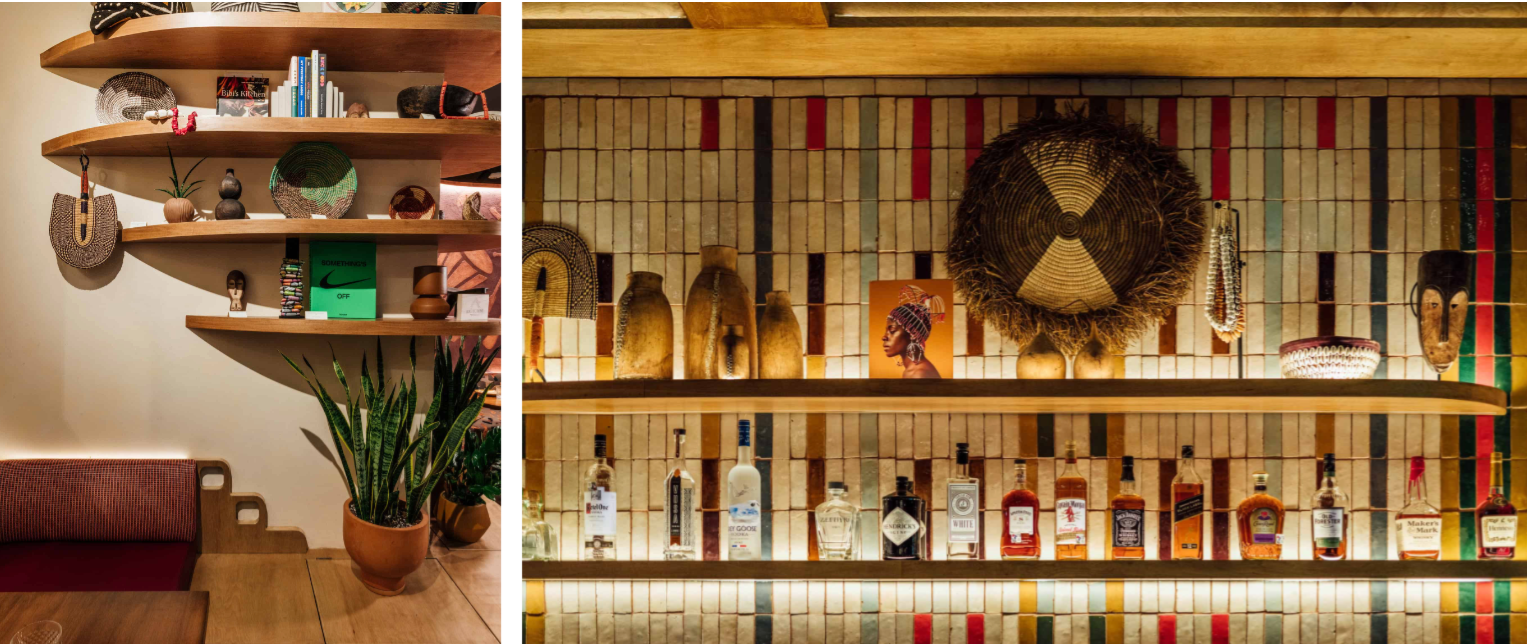
And the artistic expression isn't just in the decor—it's also shoppable. Ethically sourced, handmade African products, curated by Houston-based shop Root to Home, are on display in the restaurant and available for purchase. Patrons can also browse and buy cookbooks and coffee table books by Black authors, handpicked by Houston-based bookstore Kindred Stories.
These local collaborations and the emphasis on cultural expression in ChòpnBlọk hasn't gone unnoticed. "The community has really been impressed with the intentionality, warmth, and creativity of the space," Amosu says. "Many have expressed appreciation for how the design celebrates culture in a beautiful and inclusive way."
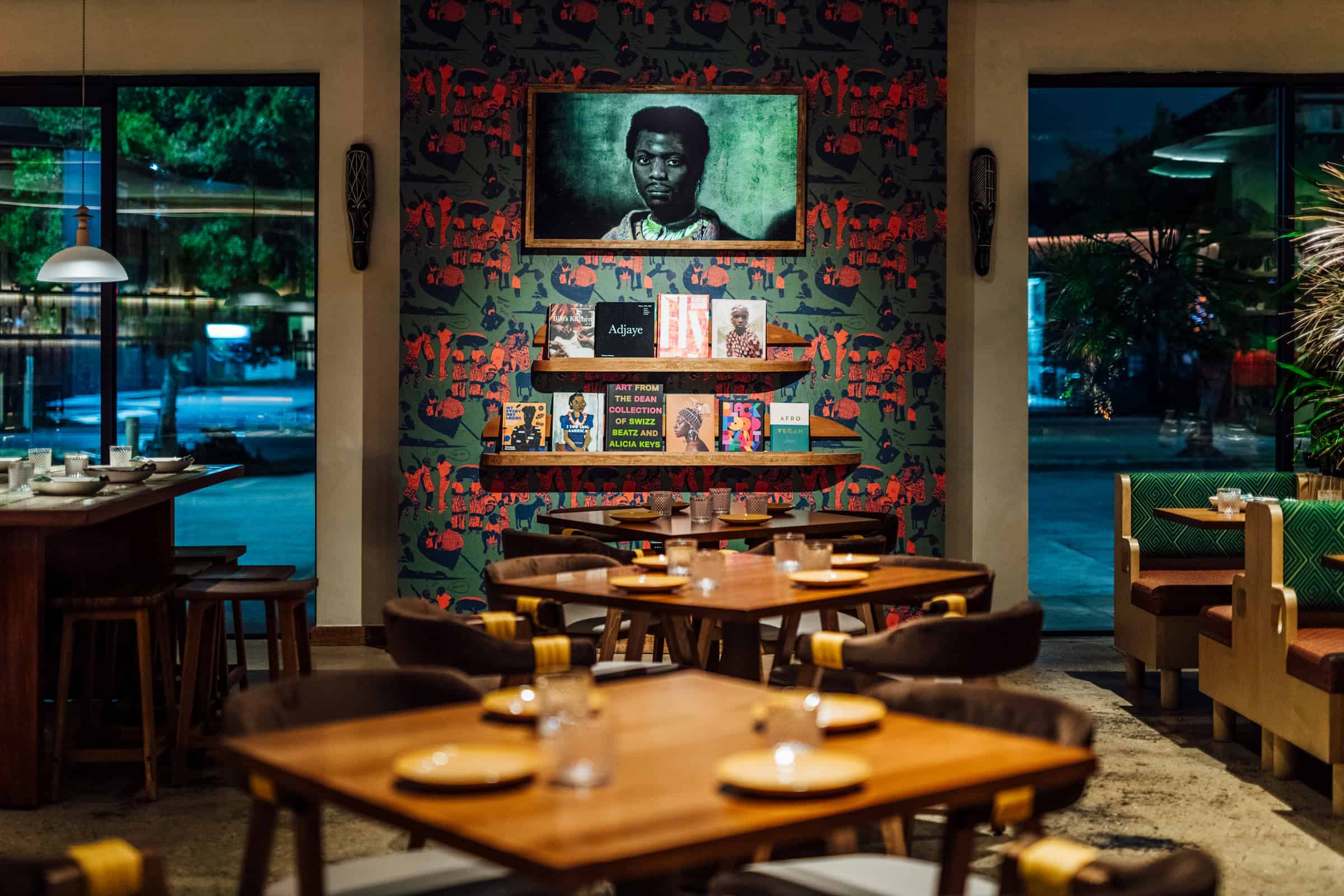
Amosu wanted to create a space that fostered a sense of belonging and connection—and it seems he's done just that. When asked what he's most proud of in the design of this Montrose restaurant, he says, "The aesthetic, the intentional representation of our heritage, and the collaborative spirit that brought this vision to life—creating a welcoming community space for all walks of life to enjoy."
—Dalene Rovenstine
